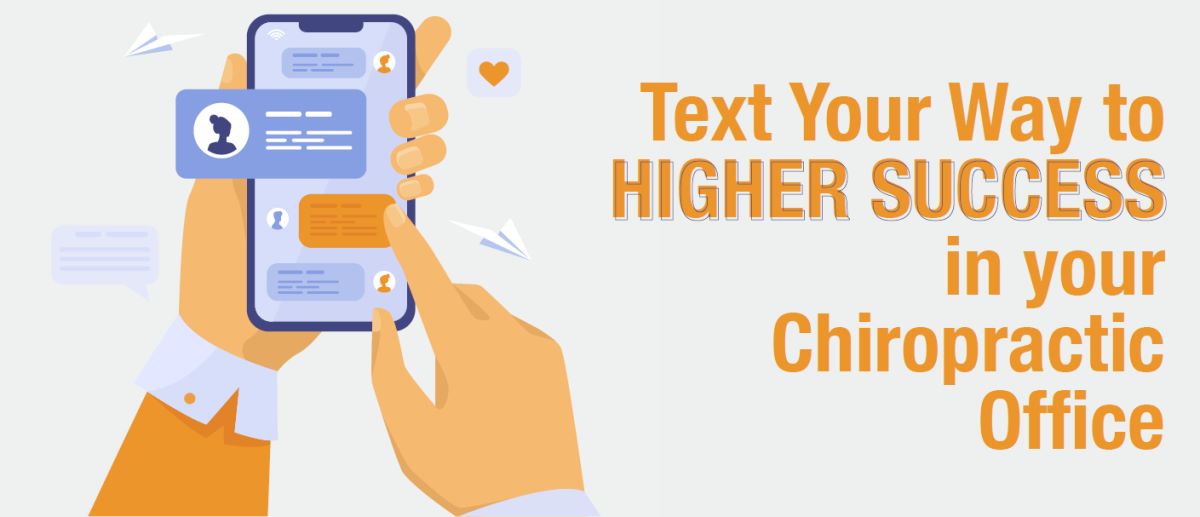

ISSUE ELEVEN ● OCTOBER 2021

INSIDE THIS ISSUE:
OCTOBER CLIENT SPOTLIGHT
Dr. Jenny Crosby established Crosby Chiropractic in 1995 and constantly strives to improve and update her knowledge in the field of chiropractic, acupuncture, and nutrition.
Currently, her emphasis is more focused on chronic illnesses that encompass depression, chronic fatigue, fibromyalgia, autoimmune diseases, and GI conditions such as Crohn’s, ulcerative colitis, and celiac.
She pursues targeted nutrition and helps patients focus on improving their gut health and their ability to absorb nutrients as a pathway to less inflammation and a healthier immune system.
 In June 2021, they joined the Review Wave family with a mission: to grow their reviews. Little did they know that this would lead them into an entirely new world of possibilities! From a surge of new reviews to attracting new patients, reactivations, and more. The team was blown away!
In June 2021, they joined the Review Wave family with a mission: to grow their reviews. Little did they know that this would lead them into an entirely new world of possibilities! From a surge of new reviews to attracting new patients, reactivations, and more. The team was blown away!
Within two months, here were their results:
The patients are raving about the new capabilities as well! It’s so much easier to do paperwork on their phone or laptop, which means more free time for other things. Same goes for the Crosby Chiropractic team it saves them hours every day from manual data entry. Doesn’t get much better than that!
Thanks for sharing your story, Crosby Chiropractic. Keep on crushing it! 🎉

Do you find yourself in this situation?
You’re so excited to welcome a brand new patient, get them all set up in the system, and start changing their life. But, things get delayed because the new patient forgot their paperwork at home or they forgot to print it out, or they don’t even own a printer.
 If you’re still gathering patient data via paper forms, faxes, or scanned documents, your answer is undoubtedly, yes. And you’re not alone. Countless practices have yet to fully join the digital age when it comes to data management.
If you’re still gathering patient data via paper forms, faxes, or scanned documents, your answer is undoubtedly, yes. And you’re not alone. Countless practices have yet to fully join the digital age when it comes to data management.
In 2019, HP, one of the leading printer companies, reported a decline in sales. HP thought that more people working from home now would lift those sales, but printer sales are still on a steady decline year after year.
A recent study showed that only 30% of millennials owned a printer. And of those who do own a printer, 60% said they barely use it and prefer to fill things out online.
Online forms play an essential role in a patient’s experience. Handing them a massive stack of paperwork they barely understand as soon as they walk through the door is not only overwhelming, it’s frustrating!
If the patient is running late, in a rush, or just exhausted from a long day of work, getting slammed with paperwork and a longer than expected wait time is the last thing they want.
You’re also asking them to take another step out of their already busy day by printing things out. And deep down, people just want things to be easy.
The patient experience can quickly become negative.
Let’s not forget it leaves a lot of room for error that you could be held accountable for later when you can’t decipher their chicken scratchings. The person manually entering that patient data could misread or misunderstand what the patient wrote, which can affect their care plan.
With online forms, you can make certain fields required so that the patient can’t submit until they’ve entered vital data. With paper forms, you have to trust that patients fill out all the required information without accidentally leaving something blank. And not to mention the awkward conversation when you have to ask them to fill it out again .😬
There are many benefits for both the patient and the practice with online forms. But bottom line, patient records will be more accurate, and the patient experience will be stellar! Practices that use online forms notice an immediate change in these key factors after day one.
In an increasingly digital world, online forms aren’t going away any time soon.
WE ADDED A NEW CAPABILITY TO OUR ONLINE FORMS
Our online forms now have branching options. This means "...send a patient to a different question or different section of the form based on how they answer." you can send a patient to a different question or different section of the form based on how they answer. You’ve probably experienced this if you’ve taken a survey that takes you to more specific questions based on how you answered basic questions. For instance, if you need to ask a patient, "Are you pregnant?" or "Have you had any neck injuries?" It could then jump you to another section to ask more specific questions. Pretty cool right?
"...send a patient to a different question or different section of the form based on how they answer." you can send a patient to a different question or different section of the form based on how they answer. You’ve probably experienced this if you’ve taken a survey that takes you to more specific questions based on how you answered basic questions. For instance, if you need to ask a patient, "Are you pregnant?" or "Have you had any neck injuries?" It could then jump you to another section to ask more specific questions. Pretty cool right?







Kenny has many talents, from keeping our daily operations running, to being our office photographer and videographer, to making sure our office plants are thriving!
Kenny’s weakness is trying to leave Target with the one and only thing he actually needed, and the candle sale and Bath and Body Works.

With the increasing popularity of texting and other mobile technologies, patients need a way to get in touch with you. Learn why texts are essential for chiropractor’s offices.
Anything is possible in the palm of your patient’s hands.
Since the first text message was sent 29 years ago in 1992, texting has become interchangeable with daily life. It’s the most popular activity among smartphone users and it’s not slowing down anytime soon.
There’s no doubt texting has radically changed the way we communicate and added new possibilities for chiropractic practices to connect with their patients.
So why have practices lagged behind when it comes to implementing business texting? Only seven percent of healthcare companies said they incorporated texting, compared to 15 percent of companies in other industries.
As patient expectations and competition grow at an alarming rate, you need to future-proof your practice. With a 99% open rate and average response time of 90 seconds, texting is about as close as it gets to a guaranteed win.
Innovation is the name of the game. And those that can adapt to the digital era will benefit significantly in the long term.
Luckily, texting makes practice growth easier than ever. Here’s how...
YOUR PATIENTS’ PHONE IS PRIME REAL ESTATE
The average person checks their phone 150 times a day. The screen of your patient’s phone can be considered the world’s most valuable real estate.
If you think of a cell phone as a window to your patient’s world, it becomes clear why texting is crucial for chiropractors today. Patients have become obsessed with instant gratification. They crave it. They expect it.
According to a survey by The American Chiropractor, 9 out of 10 patients prefer to text their doctors, including those over 60 years old. Yet the majority of chiropractic offices are still calling or emailing as their first line of communication.
“The average person checks their phone 150 times a day.”Patients need to get in touch with their doctors. They need to schedule and manage appointments, know what to expect, ask questions about treatments, etc. More importantly, they need to get in touch with their doctors on the go.
Their hands are full with kids, pets, chores, groceries, work, etc. Texting allows them to stay on top of communication without literally dropping the ball.
When you make communication easy, it strengthens the doctor-patient relationship and increases patient satisfaction better than other channels like email, phone calls, or social media.
Not only is texting the solution for staying in touch with patients; it’s also an effective marketing tool.
Dr. Lyle Koca at Koca Chiropractic Clinic in Omaha started texting patients using his business number and now sees over 2,000 patient visits per week! It also increased his show rate from 85% to 94%.
If your patients are texting every day, what’s stopping you from texting them? Open up the line of communication your patients want and need.



